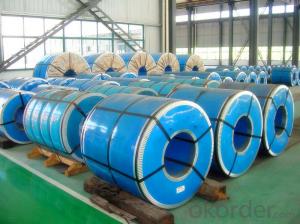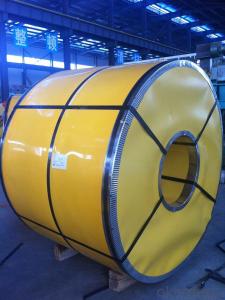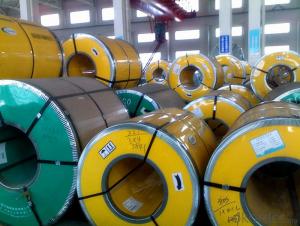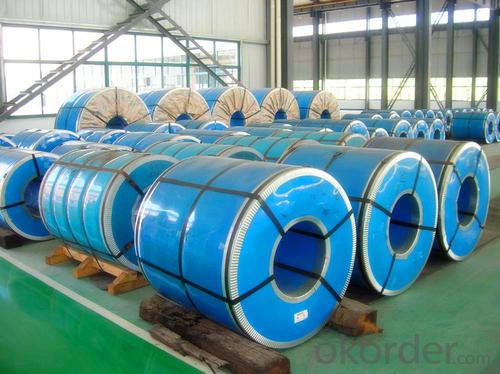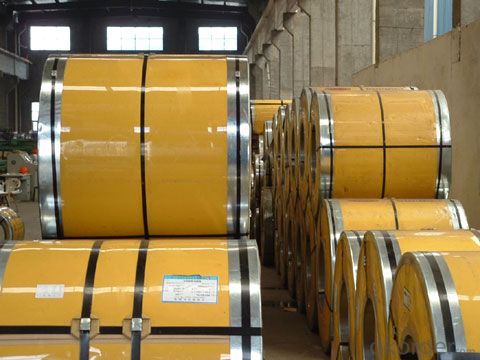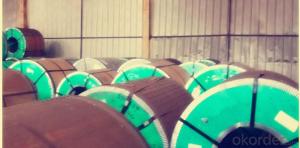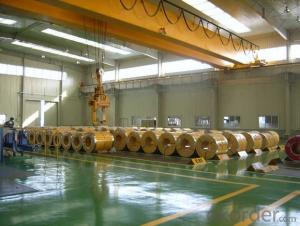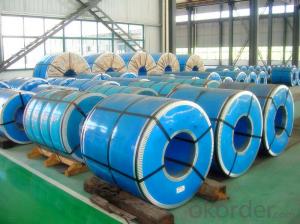Stainless Steel Coil 304 Hot Rolled Wide Strip No.1 Finish
OKorder Service Pledge
OKorder Financial Service
You Might Also Like
304 Stainless Steel Coil Hot Rolled Annealing and Pickling No.1 Finish Wide Strip
1.surface:NO.1
2.standard:JIS, AISI, GB
3.width: 0.55m
304 Stainless Steel Coil Hot Rolled Annealing and Pickling No.1 Finish Wide Strip Chemical Composition:
(%):C=0.07, Mn=2.00, P=0.045, S=0.030, Si=0.075, Cr=17.5-19.5, Ni=8.0-10.5, N=0.10
304 Stainless Steel Coil Hot Rolled Annealing and Pickling No.1 Finish Wide Strip Physical Properties
Tensile strength σb (MPa) ≥ 520
the conditions yield strength σ0.2 (MPa) ≥ 205,
elongation δ5 (%) ≥ 40
Reduction of ψ (%) ≥ 50,
hardness: ≤ 187
HB; ≤ 90
HRB; ≤ 200H
304 Stainless Steel Coil Hot Rolled Annealing and Pickling No.1 Finish Wide Strip
Type | 304 Stainless Steel Coil Hot Rolled Annealing and Pickling No.1 Finish Wide Strip |
Thickness | 3.0mm-4.0mm |
Width | 1000mm, 1219mm, 1240mm, 1500mm |
Length | according to weight |
Brand name | CNBM |
Standard | ASTM, AISI, DIN, GB, JIS etc |
Material | 304 |
Application | Foodstuff, Gas, metallurgy, biology, electron, chemical, petroleum, boiler, nuclear energy, Medical equipment, fertilizer etc |
Package | Standard export sea-worthy packing |
Delivery time | Within 15 days since getting the deposit or LC origin |
Surface | NO.1 |
Productivity | 20000 tons/month |
- Q: How do stainless steel strips resist intergranular corrosion?
- Stainless steel strips resist intergranular corrosion primarily due to the presence of chromium in their composition. Chromium forms a protective oxide layer on the surface of the steel, which acts as a barrier against corrosive elements. This oxide layer is self-repairing, ensuring the strips retain their corrosion resistance even if damaged. Additionally, stainless steel strips are often alloyed with other elements such as molybdenum, which further enhances their resistance to intergranular corrosion.
- Q: What is the difference between hot rolled and cold rolled stainless steel strips?
- The main difference between hot rolled and cold rolled stainless steel strips lies in the manufacturing process. Hot rolled stainless steel strips are produced by heating the steel to high temperatures, allowing it to be easily shaped and formed. This process results in a rougher surface finish and a less precise dimensional accuracy. On the other hand, cold rolled stainless steel strips are manufactured at lower temperatures, which leads to a smoother surface finish and a more precise dimensional consistency. This makes cold rolled stainless steel strips suitable for applications requiring a higher level of precision and a finer surface quality.
- Q: Can stainless steel strips be used in renewable energy applications?
- Yes, stainless steel strips can be used in renewable energy applications. Stainless steel is a durable and corrosion-resistant material that can withstand various environmental conditions, making it suitable for use in renewable energy technologies such as solar panels, wind turbines, and geothermal systems. It is commonly used in the construction of frames, supports, and structural components in these applications due to its strength and resistance to rusting or degradation over time.
- Q: Can 111 stainless steel strips be used in the construction industry?
- Yes, 111 stainless steel strips can be used in the construction industry. Stainless steel strips are widely used in various construction applications such as roofing, cladding, structural supports, and decorative elements. The specific grade 111 may have certain properties that make it suitable for specific construction purposes, such as enhanced corrosion resistance or high strength. However, it is important to consult with an engineer or construction professional to ensure that the grade and specifications of the stainless steel strips meet the project requirements.
- Q: Are stainless steel strips suitable for springs?
- Yes, stainless steel strips are suitable for springs. Stainless steel is known for its high strength, corrosion resistance, and durability, making it an excellent choice for spring applications. It can withstand heavy loads, maintain its shape, and resist rust and corrosion, making it ideal for various spring applications in industries such as automotive, aerospace, and manufacturing.
- Q: What are the common surface finishes for stainless steel strips?
- Common surface finishes for stainless steel strips include mill finish (also known as 2B or BA finish), brushed finish, polished finish, and embossed finish.
- Q: How do you prevent galling of stainless steel strips?
- One effective way to prevent galling of stainless steel strips is by applying a lubricant or anti-seize compound to the surface. This helps reduce friction and wear during sliding or rubbing contact, preventing the surfaces from seizing or sticking together. Additionally, using proper machining techniques, such as slow and steady cutting speeds, adequate cooling, and sharp cutting tools, can also minimize the risk of galling.
- Q: What is the corrosion resistance of stainless steel strips in saltwater?
- Stainless steel strips have excellent corrosion resistance in saltwater environments. The high chromium content in stainless steel forms a protective layer of chromium oxide on the surface, which acts as a barrier against corrosion and prevents the metal from reacting with saltwater. This makes stainless steel strips highly resistant to rust and corrosion caused by saltwater exposure. Additionally, stainless steel is also resistant to pitting corrosion, which is a common form of corrosion in saltwater environments. Therefore, stainless steel strips are widely used in marine applications, such as shipbuilding and offshore structures, where they are exposed to saltwater conditions.
- Q: Can stainless steel strips be used in the production of automotive exhaust systems?
- Indeed, the utilization of stainless steel strips proves to be feasible in the manufacturing process of automotive exhaust systems. The commendable resistance against corrosion, impressive capacity to withstand high temperatures, and remarkable durability render stainless steel a favored preference for exhaust systems. Such attributes make stainless steel strips the perfect choice for enduring the harsh conditions and extreme temperatures that exhaust systems are exposed to. Furthermore, the malleability and weldability of stainless steel strips allow for effortless formation into the required shapes and configurations essential for automotive exhaust systems.
- Q: Are stainless steel strips suitable for decorative purposes?
- Stainless steel strips prove to be an excellent option for enhancing aesthetics. Renowned for its sleek and contemporary look, stainless steel is a favored choice for a wide range of decorative uses. Its surface boasts a shiny and reflective quality that effortlessly adds an air of elegance to any setting. These strips offer endless possibilities for creating decorative accents, whether it be a stylish trim, border, or even a custom design on walls, furniture, or appliances. Not only does stainless steel promise durability, but it also exhibits remarkable resistance to corrosion, making it a reliable choice for both indoor and outdoor applications. Moreover, its effortless maintenance and easy-to-clean nature ensure that its decorative qualities remain intact for years to come. All in all, stainless steel strips present a versatile and visually appealing option for decorative purposes.
Send your message to us
Stainless Steel Coil 304 Hot Rolled Wide Strip No.1 Finish
OKorder Service Pledge
OKorder Financial Service
Similar products
Hot products
Hot Searches
Related keywords
